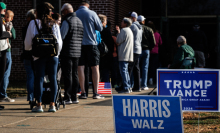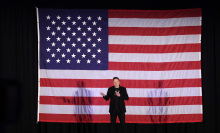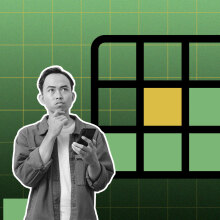Influencers are not new, but the harm they're spreading might be.
The concept of influencers — people whose ideas and presence shape how we move within the world — have been around since before Shakespeare. But in the millennia before social media, influencers were celebrities, playwrights, and politicians so far removed from ourselves that their impact was blurred and shadowed by their distance. On the internet, their power is more palpable. Influence and power can create an air of inauthenticity — today's social media influencers can combat that.
"When we think specifically about social media influencers, that [phenomenon] really happened in 2012," Amanda Brennan, a meme librarian and the senior director of trends at XX Artists, a digital marketing agency, told Mashable. Before 2012, your internet was flourishing off of memes and pages dedicated to famous internet pets, but not necessarily authenticity. Of course, we also had creators like Shane Dawson and Bo Burnham cultivating a young audience on YouTube, but their content was more performative and less focused on being authentic or "real."
SEE ALSO: Best cameras for vlogging
Then, everything switched: Instead of just loving lol cat, people became obsessed with Grumpy Cat and the family who owned him. The vloggers of YouTube began thriving, and Instagram became a host for all things celebrity and influence.
"If you think about it in the context of people's relationships to the internet after 2010, that's when it became a lot more normal to be your person online," Brennan said.
And there's a big difference between influencers of the past and social media influencers today.
"Media influence on young people is something that's been known for years," Ellen Selkie, an adolescent medicine specialist and researcher at the University of Wisconsin-Madison, told Mashable. "But I think the thing with influencers that is additional is that there is a development of a para-social relationship with the influencer." You can DM your favorite influencer or micro influencer and get a response; they do whole Q&As specifically for this. Celebrities and influencers pre-social media weren't so accessible.
Celebrities and influencers pre-social media weren't so accessible
While influencers and celebrities have existed for millennia, they haven't held this kind of influence and power, with such an incredible lack of checks or balances. They're marketers, inspirations, and an unfair comparison all rolled into one. And because it is relatively new, we're still coming to terms with the potential harms of this violently underregulated industry.
According to documents revealed by the Wall Street Journal's Facebook Files, most people feel worse when they see celebrities and influencers like Addison Rae and Kendall Jenner in their Instagram feed because they compare those celebrities to themselves. Facebook's internal research showed that social comparison and body image issues are high for all Instagram users, but impacted teens more than adults — some of the most "intense experiences" for young users was social comparison, loneliness, stress and depression. Nearly half of all teen girls on Instagram feel they "often or always compare their appearance" to others on the platform, and a third "feel intense pressure to look perfect."
"Social comparison is worse on Instagram," internal Instagram documents released by the Journal read. "It is perceived as real life, but based on celebrity standards. Explore and profile stalking enables never-ending rabbit holes. Celebrity content is more frequent but friends' content is more impactful in terms of social comparison."
Beyond the damage social comparison can have on young people, influencer marketing also floods the streams of everyone online — and it's something young people might not be able to decipher as well as adults.
"As marketers get younger and younger, they come to acknowledge the power of social relationships between younger people and the people that they follow online," Brennan said.
This marketing isn't always so straightforward. Think about unboxing videos on YouTube: Sure, they have banners that disclose that they're ads, but it's hard to decipher what that actually means when you're young, or when you have this parasocial relationship with an influencer that can lead you to trusting them because you feel like you know them as a person.
Ryan's World, a channel on YouTube with more than 30 million subscribers, posts videos following around a kid while he plays games, makes crafts, and does science experiments. He also films unboxing videos that are, typically, thinly veiled ads. Ryan's World is just one of dozens of videos in which kids unbox and review toys, and the young people who watch these videos might not understand that they're ads. When we watch these videos, we face comparisons not only to the influencers' lifestyle, but also to their social and economic status.
"Unboxing videos are one of the most popular genres on YouTube, and that's fundamentally unfair to younger kids because they don't understand the persuasive intent that that person is selling them something and that they should discount like what Ryan is saying in a Ryan's toy review because Ryan is being compensated," Josh Golin, the executive director of Fairplay, a nonprofit that works to make the internet a safer place for kids, told Mashable. "That's part of how we understand advertising as adults, and we can discount what they're saying, but with kids in a video, like Ryan's toy reviews, younger children don't even understand that."
Some influencers are more straightforward in their marketing towards kids. Take Jake Paul, for example, whose 2017 Christmas music video featured the then 20-year-old Paul rapping "buy that merch" over and over again. It has over 18 million views.
The Kids Internet Design and Safety (KIDS) Act, which was reintroduced in September by Massachusetts Democrat Sen. Edward Markey, Connecticut Democrat Sen. Richard Blumenthal, and Florida Democrat Rep. Kathy Castor, would, among other acts, ban platforms from recommending influencer marketing content to children and young teens.
That isn't to say that all influencers are creating mentally draining spaces on Instagram, either. Gianluca Russo, a fashion and culture writer and micro-influencer who covers size inclusivity, told Mashable that some influencers can be overwhelmingly detrimental to the mental health of young people. Others, though, hold important space in representation.
"In a lot of ways we have to use social media to create our own representation," Russo said. "The people who are doing that, who are pushing the boundaries in these really impactful and emotional ways, are the ones who will ideally have the biggest impact on teens and on the next generation who they're hoping will then step into their place as time goes on."
Selkie said that it's important to "amplify and incentivize the more positive behaviors and messaging that influencers have" in order to "improve the experience of young people who are consuming the content." She pointed out that while some influencer actions can have detrimental effects on young people's outlooks, others can be positive.
For instance, she says, when Magic Johnson went public about living with HIV, it increased condom use among young people. When JoJo Siwa publicly came out, her favorability increased, and it had a positive effect on LGBTQ kids and parents, according to Insider. When models talk about size inclusivity, it can foster community. It's important for young people to be able to see themselves represented in positions of power, which influencers hold. That kind of work should be celebrated.
Selkie added that one difference between traditional celebrities and influencers is that "anybody can be an influencer." Because of this, young people can see themselves represented more directly online through influencers. "And that can be very important for adolescent development and identity in terms of having a role model who is like you and is not unreachable," Selkie said.
It can be really helpful for kids who are vulnerable to see that there are people like me, and if they're feeling hopeless that there may be some hope that things are going to be OK.
"It can be really helpful for kids who are vulnerable to see that there are people like me, and if they're feeling hopeless that there may be some hope that things are going to be OK," Selkie said. "So I would say that, in addition to the influence that influencers can have globally, for these vulnerable populations, I do think that they have an important role in what we call informational support of young people and their identity."
This comes at a time in which young people are spending more time online than ever before. According to a study from the parental control app Qustodio, young people spent 76 percent more time on social media in 2020 than in years prior, in part due to the physical isolation of the Covid-19 pandemic. That resulted in both negative and positive effects on kids: They were able to connect with their friends that they couldn't see in real life, but they were also confronted with more marketing and more opportunities for physical and social comparisons.
Eliminating influencer culture altogether might not be a realistic solve, but there are some things that can be done to lessen its potential harms on vulnerable children.
"I would say that if there are ways that we can incentivize influencers to create more positive and healthy content, then I think we could improve this relationship and mitigate some of our concerns about the negative effects," Selkie said.
The KIDS Act would, of course, make influencer marketing to young people more difficult, and no plan is complete without increased media literacy. And, in the end, we as a society may need to change our approach to social media overall. Russo recommends people really investigate who they follow online and how they make them feel. And Selkie says we need to find support offline for this, too.
"It also comes down to what is the relationship between online and offline life," Selkie said. "Being online and using social media and consuming and interacting with influencer content is an important component for youth mental health right now. That being said, offline support is also important. So here's where we bring in parents and schools and mental health services, which are woefully lacking in general. And I think that's where you get this more global picture of having some way for young people to process their online experience with support people offline."
Completely eliminating influencers from the internet isn't a likely solution, but finding ways to help young people exist online with them is ever-important.
Topics Facebook































